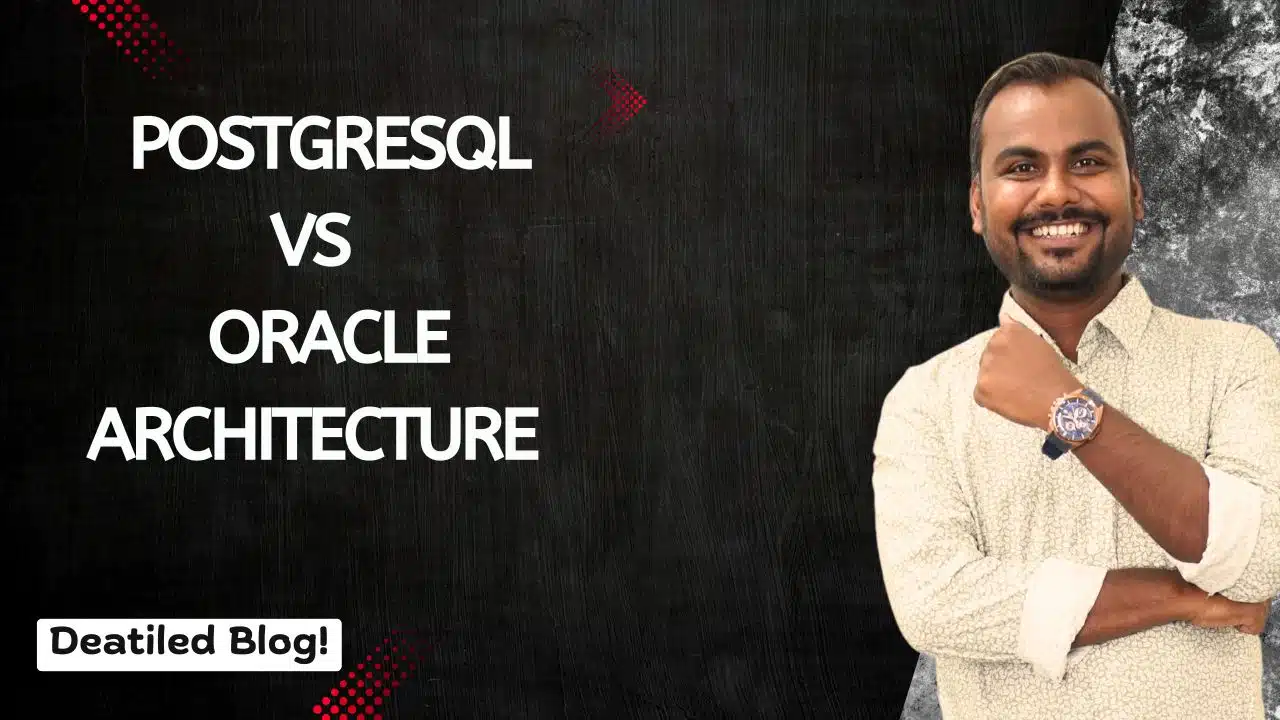PostgreSQL vs Oracle Architecture
PostgreSQL vs Oracle Architecture Comparison – A Detailed Overview
When it comes to enterprise-level database management systems, PostgreSQL and Oracle Database are two of the most powerful and widely used platforms. Both are known for their reliability, scalability, and robust performance — but their architectural design and implementation approach differ significantly.
In this blog, we’ll explore the key architectural differences between PostgreSQL and Oracle, helping you understand which system better suits your business or learning needs.
1. Overview of PostgreSQL and Oracle
PostgreSQL
PostgreSQL is an open-source, object-relational database system developed by the PostgreSQL Global Development Group. It is known for standards compliance, extensibility, and support for advanced features such as JSON, custom data types, and procedural languages.
Oracle Database
Oracle Database, developed by Oracle Corporation, is a commercial, multi-model relational database known for high performance, advanced security, and scalability. It’s widely used in enterprise environments that demand large-scale transaction processing and high availability.
2. Architecture Comparison
| Feature | PostgreSQL | Oracle Database |
|---|---|---|
| Process Model | Follows a process-based architecture — each client connection spawns a new backend process. | Uses a multi-threaded architecture — multiple user sessions share background processes, making it more resource-efficient. |
| Memory Architecture | Shared memory includes shared buffers, WAL buffers, and work memory per session. | Divided into SGA (System Global Area) and PGA (Program Global Area) for efficient memory and process management. |
| Background Processes | Includes processes like autovacuum, checkpointer, writer, and walwriter. |
Has a wide range of background processes such as DBWn, LGWR, CKPT, SMON, PMON, and more. |
| Storage Architecture | Data is stored in tablespaces → databases → schemas → tables structure. Each table has its own heap file. | Data is stored in tablespaces → datafiles → segments → extents → blocks hierarchy. |
| Transaction Management | Implements MVCC (Multi-Version Concurrency Control) for transaction isolation without locks. | Uses undo segments and redo logs for transaction management and recovery. |
| Logging & Recovery | Uses WAL (Write-Ahead Log) for crash recovery and data integrity. | Uses Redo Logs, Archive Logs, and Undo Segments for comprehensive recovery. |
| Extensibility | Highly extensible — supports custom data types, operators, and index types. | Limited extensibility — but highly optimized for performance and built-in features. |
3. Performance and Scalability
-
PostgreSQL: Best suited for analytical workloads, custom applications, and environments where flexibility and open-source innovation matter.
-
Oracle: Optimized for large-scale enterprise systems with complex transactional workloads and high concurrency requirements.
4. Licensing and Cost
-
PostgreSQL: Completely free and open source, with no licensing costs.
-
Oracle Database: Requires a commercial license, and costs can scale based on CPU cores, options, and support levels.
At Learnomate Technologies, we help students and professionals master both databases through hands-on Oracle DBA and PostgreSQL Administration training.
Follow us for more real-world PostgreSQL insights, performance tuning tips, and DBA best practices.
At Learnomate Technologies, we make sure you not only understand such cutting-edge features but also know how to implement them in real-world projects. Whether you’re a beginner looking to break into the database world or an experienced professional upgrading your skillset—we’ve got your back with the most practical, hands-on training in Oracle technologies.








Let’s keep learning, exploring, and growing together. Because staying curious is the first step to staying ahead.


